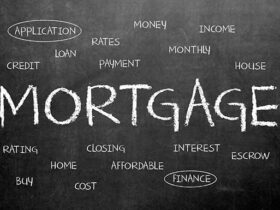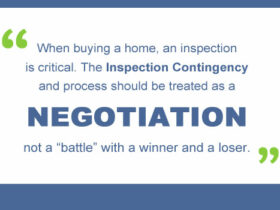When the possibility of homeownership comes up, it’s natural to want to know more about the home buying and mortgage processes. Your mortgage payment is made up of four very distinct and separate parts. The loan principal and interest; property taxes; home owners insurance, and mortgage insurance. This article is intended to be a short guide into what comprises a mortgage and how to understand what lenders are saying.
What Exactly is a Mortgage?
Briefly explained, a mortgage is a long-term loan designed to allow the borrower to purchase a home. By taking out a mortgage loan, the buyer pledges the house to the bank as collateral on repayment of the loan needed to purchase it. Should the homeowner default on payment(s), the lender has a legal claim on the house and can repossess it, so make sure you’re ready to buy a home.
In return for lending the buyer money, the lender charges interest on the principal loan amount. Interest rates vary depending on market demand, the type, terms and length of the loan, and the individual borrower’s down payment and credit ratings.
Mortgages Dissected
The acronym for the four components of a mortgage is PITI; it stands for principal, interest, taxes, and insurance. Of these four, the actual loan principal and the lender’s interest rate charged comprise the heftiest amount.
There is an inverse relationship between the term of the loan and the size of the monthly payment. The more years a mortgage is in effect, the smaller the monthly payments. This is the main reason why 30-year mortgages are the most popular.
Determine How Large a Loan You Can Get
Before applying for a mortgage determine how large a mortgage you can get while still buying a home within your means. First, check to see if you are eligible for a loan from the FHA, the VA, and USDA. These three lenders have the best terms for consumers, especially those who need to make a reduced down payment. If you do not qualify for any of the three, check the current terms for Fannie Mae and Freddie Mac loans, what an “open to all” credit union in your area might offer, and then your commercial bank and the competitors. Most, if not all, have websites with the needed info along with a mortgage calculator to make it easy to determine 1) if you qualify and 2) for how much.
The PITI Element
Now that you have an idea of the loan size and terms you can get, it’s time to discuss the four factors that play a role in the calculation of a mortgage payment. Those four items are principal, interest, taxes and insurance.
Principal
The loan principal is the amount of money borrowed for your mortgage prior to interest, etc. It is the portion of each mortgage payment dedicated to repayment of the principal. Loans are structured so that the amount of principal (your actual equity in the home) begins small and increases with each mortgage payment. While the mortgage payments in the first years consist primarily of interest payments, the payments in the final years are primarily of principal repayment.
Example: For a $100,000 mortgage, the principal is $100,000.
Interest
Interest is the lender’s payment or fee for taking a risk and loaning money to a borrower. The interest rate on a mortgage has a direct impact on the size of a mortgage payment. Higher interest rates mean higher mortgage payments. The higher the interest rate, the less cash you can borrow; the lower the interest rate, the more cash you have access to.
If the interest rate on our imaginary $100,000 mortgage is 6%, the combined principal and interest monthly payment on a 30-year mortgage would be something like $599.55 ($500 interest + $99.55 principal). To get an idea of what a monthly payment amount is, based on a particular principal and interest rate, see this calculator guide to avoid being blind to some hidden costs of homeownership.
Taxes
Real estate taxes are assessed by governmental agencies. They are used to fund public services such as school construction, police, and fire-department services. Taxes are calculated by the government on a per-year basis; homeowners can pay these taxes as part of their monthly payments or in a one-lump sum yearly. Frankly, it makes more financial and budgetary sense to pay your real estate tax as part of your mortgage. Your lender amortizes the yearly real estate tax due on your residence, and the total is evenly split over your yearly mortgage for the specific year. Your lender collects the payments and holds them in escrow until the taxes are due.
Insurance
There are two types of insurance coverage that may be included in a mortgage payment. Like real estate taxes, insurance payments are made with each mortgage payment and held in escrow until the bill is due. The first type of insurance is property insurance, which protects the home and its contents from fire, theft and other disasters.
The second type of insurance is PMI (mentioned above), which is mandatory for homeowners who purchase a home with a down payment of less than 20% of the home’s cost. This type of insurance protects the lender in the event that the borrower is unable to repay the loan. Because it minimizes the default risk on the loan, PMI also enables lenders to sell the loan to investors who, in turn, have some assurance that their debt investment will be repaid.
PMI coverage can normally be dropped once the borrower has 20% equity in the home.
It should be noted that today, a 20% down payment is desirable, as this minimizes private mortgage insurance (PMI) requirements. However, there are mortgage programs available that allow significantly lower down payments.
Putting it All Together – the Amortization Schedule
A mortgage’s amortization provides a detailed look at precisely what portion of each mortgage payment is dedicated to each component of PITI. As noted earlier, in the first years, mortgage payments consist primarily of interest payments. Over time, more of your monthly payment goes to the principal, giving you greater equity in your home.
Using our example of a $100,000, 30-year mortgage, the amortization schedule would consist of 360 payments. The schedule below shows how the balance between principal and interest payments reverses over time as later payments consist primarily of principal.
| Payment | Principal | Interest | Principal Balance |
|---|---|---|---|
| 1 | $99.55 | $500.00 | $99,900.45 |
| 12 | $105.16 | $494.39 | $98,772.00 |
| 180 | $243.09 | $356.46 | $71,048.96 |
| 360 | $597.00 | $2.99 | $0 |
The actual mortgage payment remains at $599.55 every month. But the amount dedicated toward principal and interest varies from payment to payment.
Because of the inverse relationship between principal and interest paid, at the start of your mortgage, the rate at which you gain equity in your home is much slower.
This demonstrates the value of making extra principal payments if the mortgage permits pre-payment. Each extra payment results in a larger repaid portion of the principal, and reduces the interest due on each future payment, moving the homeowner toward the ultimate goal of paying off the mortgage.
Understanding all the parts of what make up a home mortgage is essential in your decision to buy a home. Homeownership is a long-term commitment, and you should discuss your options with a financial advisor before signing anything. It is better to plan ahead in order to get the best deal possible, in both the short and long term, before jumpIng in.




